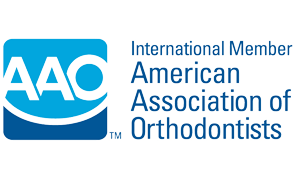Crowded teeth are a common problem for patients seeking braces treatment. Teeth don’t have enough room to erupt properly, so they come in crooked or out of place. In some cases, braces treatment alone can fix it. In other cases, a palate expander before braces is needed.
Smith & Davis Orthodontics uses several types of appliances before braces to ready your mouth and jaws for treatment. This ensures the greatest success when we treat you with braces or Invisalign.
A palate expander is one of the most common pre-braces appliances. What is a palate expander, and will you need one?

What Is a Palate Expander?
A palate expander, or palatal expander, is a device that does as the name suggests: It expands the palate to make room to straighten your teeth. The device pushes against the sides of your upper jaw, expanding the roof of your mouth, or palate.
A palate expander consists of bands that wrap around the back teeth (molars) and wires that push against the premolars. A device in the center nestles into the palate. A key is inserted into a hole in the center of the palate expander and turned each day, applying slightly more pressure to the bands on either side.
The pressure exerted widens the palate at the seam that runs down the center (you can probably feel it with your tongue!). As the seam slowly expands, it fills in with bone, widening the jaw.
What Are the Types of Palate Expanders?
Different types of palate expanders perform the same function but in different ways. The two most common types are the removable palate expander and the rapid palate expander. The other two types are reserved for the more severe cases and require surgery of some kind.
Here are the four types of palate expanders:
- Removable palate expander: A metal device that looks similar to a retainer and provides only a small amount of movement. It’s mainly for those who only need slightly more space.
- Rapid palate expander: The most common type is an RPE, which uses wires that fit against the premolars and wrap around the molars to apply pressure. This expander uses a key to widen the jaw by pushing it apart in the center.
- Surgically assisted rapid palate expander (SARPE): These palate expanders are surgically implanted in the mid-palatal suture, the seam in the middle of the roof of the mouth. It’s usually reserved for moderate to severe cases and adults with fully hardened palates. Once inserted, it works much like the RPE.
Implant-Supported Palate Expander (ISPE): This palate expander is connected to four dental implants instead of using teeth as pressure points. It applies pressure directly to the jaw and is reserved for teens and adults who have more severe dental issues. These can also be called Maxillary Skeletal Expansion (MSE) or Miniscrew-Assisted Rapid Palate Expander(MARPE).

How Does a Palate Expander Work?
Whether it’s a palate expander for adults or for kids, palate expanders work in the same basic way, particularly the RPEs.
You will be given a key, which is similar to a small wire inserted in a plastic handle. That key is inserted into a hole in the center of the palate expander. Then, you rotate the key once a day, usually a half turn or so, and that’s it. This will apply a little more pressure to the jaw to widen it.
Does a Palate Expander Hurt?
It’s one of the most common questions about palate expanders: Does a palate expander hurt? A palate expander may be uncomfortable for the first few days as you get used to having the device in your mouth and applying pressure. This is expected and should disappear after a few days.
You might also feel pressure after turning the key daily, but you should get used to it quickly. Overall, your palate expander should not cause serious pain. If your pain gets worse instead of better, call us right away. We will check it to see if adjustments need to be made.
Palate Expander Facial Changes?
Are there palate expander facial changes? Though the palate expander widens your jaw, the movement is very subtle. You likely will not notice any facial changes during or after your palate expander treatment.
You might notice a space growing between your central incisors, which are your front teeth. Your braces or clear aligners treatment will correct that.
Palate Expanders for Adults or Kids
Palate expanders work best with younger children because the bones in the upper jaw aren’t fully formed and hardened yet. This makes it much easier to move the bones apart.
That said, palate expanders will work just as well with adults. The expansion may take slightly longer to work, but it will work for adults.
On average, a palate expander is worn 6-12 months before braces treatment. Not everyone needs a palate expander, but it will be an option we discuss during your first orthodontic consultation.
Palate Expander Treatment in Rogers, AR
Palate expanders are one of many tools we use to prepare your teeth and jaws for braces treatment, but we only use them if necessary. Not every patient will need one, but those who do can succeed tremendously in braces treatment once space is made for their teeth. It also means less need for tooth extractions before braces.
Will you need a palate expander? We will answer that question at your first consultation for braces in Rogers, AR, with Smith & Davis Orthodontics. Schedule an appointment to see how we can improve your smile!






